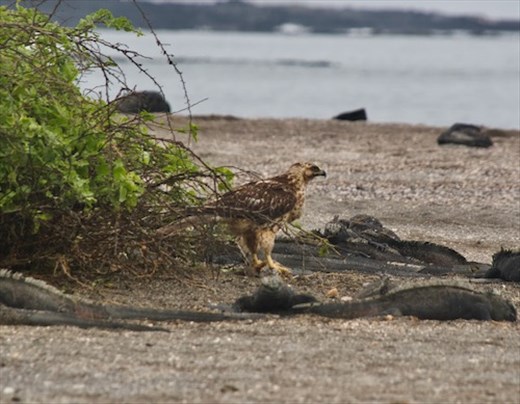DARWIN’S FINCHES ARE THE BEST-KNOWN of the one hundred or so resident bird species in the Galapagos. They may have inspired his theory of evolution but the seventeen species are actually in the tanager family—they are not even closely related to finches!

Galapagos Mockingbird

San Cristobol Mockingbird
According to Darwin’s own notes it was with the islands’ mockingbirds beak shape, coloration and behavior that first caught his attention. He found similar traits in the “finches” when he examined his specimens back in England.

Darwin's "Finches" It's all about the Beak

Cactus Finch

Small Ground Finch

Vegetarian Finch
It wasn’t Darwin’s finches that brought us back to the Galapagos but another prime example of natural selection—the Flightless Cormorant. Also known as Galapagos Cormorants, about 1000 nesting pairs live on Fernandina and Isabella Islands. The waters between the islands are rich with marine life from the Humboldt Current so the birds didn’t need to fly far for food. They are strong swimmers and don't use their wings to "fly" underwater like penguins, so over time—about two million years—those birds with smaller wings and larger bodies were more successful. Today they have completely lost the ability to fly, the only flightless cormorant species and not-coincidentally, the largest.

Nesting Flightless Cormorants

Flightless Cormorants are strong swimmers

Galapagos Penguins "fly" underwater
Infinity, unlike the slower, smaller Nemo II, has the ability to reach the western islands which is a main reason we booked this voyage. Seeing these remarkable birds with their turquoise eye was the highlight of our trip. Even though the Islands are located on the Equator, the cold Humboldt Current also makes these islands habitable for the Galapagos Penguin.

Galapagos Shearwater

Galapagos Hawk with Marine Iguana lunch
Although we saw several other birds found nowhere else in the world like the Galapagos Shearwater and Galapagos Hawk, we were a bit disappointed in the number of birds we saw on the trip. All the spieces were present but it seemed like there were fewer individual birds than we remembered.